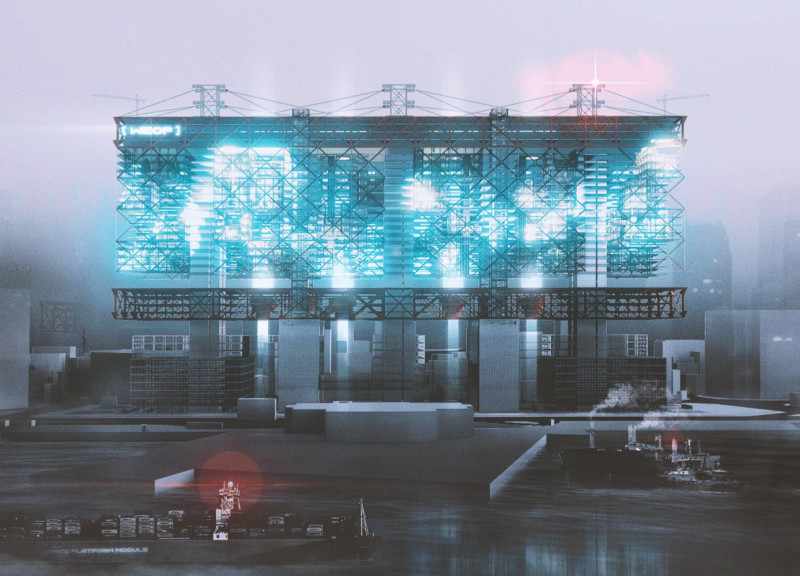5 key facts about this project
At its core, the Sustainable Office Platform serves not just as a physical space for work, but as a flexible framework that encourages collaboration and interaction while enhancing employee wellbeing. The project embodies a modular system of construction that allows for comprehensive reconfiguration of workspaces, accommodating various usages and occupancy levels. By employing a network of free-standing, interchangeable modules, the design ensures that businesses can readily adapt their environments to meet the growing demands of remote and hybrid work models.
The architectural design utilizes a thoughtful selection of materials that balance structural integrity with environmental responsibility. Reinforced concrete and steel frames provide a robust backbone, while extensive glass facades allow natural light to permeate the interior, contributing to energy efficiency and a pleasant work atmosphere. This emphasis on transparency not only fosters a connection with the outside environment but also embodies the project's commitment to sustainability by minimizing reliance on artificial lighting.
A remarkable aspect of the project is its integration of green spaces into the built environment. The Sustainable Office Platform is designed as “urban lungs,” incorporating elements such as rooftop gardens and vertical green walls that enhance biodiversity and improve air quality. These features serve to create a healthier workspace, reducing the ecological footprint typically associated with conventional office buildings. The incorporation of biofilters further purifies indoor air, creating an inviting environment for workers while addressing the issues of urban pollution.
Technologically, the project introduces advanced systems, such as AI-driven modules that facilitate customization of individual work environments. This aspect is particularly important as it allows employees to tailor their surroundings to enhance comfort and productivity. The design encourages a shift away from rigid layouts, promoting a sense of agency among users, which is increasingly vital in today's work culture.
Unique to this architectural endeavor is its focus on community integration. Rather than merely isolating the workspace, the Sustainable Office Platform is embedded within the urban fabric of Busan, seeking to create synergies with local amenities, cultural landmarks, and public spaces. This design approach fosters a sense of belonging and encourages interaction not just within the workspace but also with the broader community, enriching the urban experience.
In terms of future vision, the project outlines an incremental evolution of the office space, projecting an adaptive trajectory over decades. By 2030, the platform aims for a refined workspace that promotes a high degree of functional efficiency. By 2060, it seeks to fully realize its potential as a Transformable Office that can dynamically align with diverse work styles. Ultimately, by 2090, it aspires to become a City Botanical Garden Office, further enhancing the integration of natural elements into urban life.
The Sustainable Office Platform exemplifies a comprehensive response to contemporary challenges in urban architecture, showcasing how thoughtful design can effectively influence workplace dynamics and ecological responsibility. Readers are encouraged to explore the project presentation for deeper insights into its architectural plans, sections, and designs. This exploration will provide a richer understanding of the innovative architectural ideas that define this project.


























